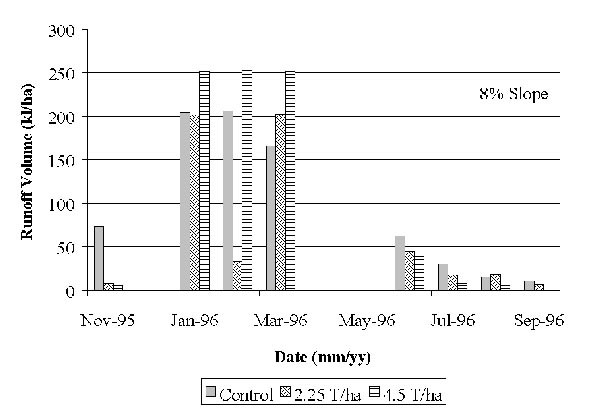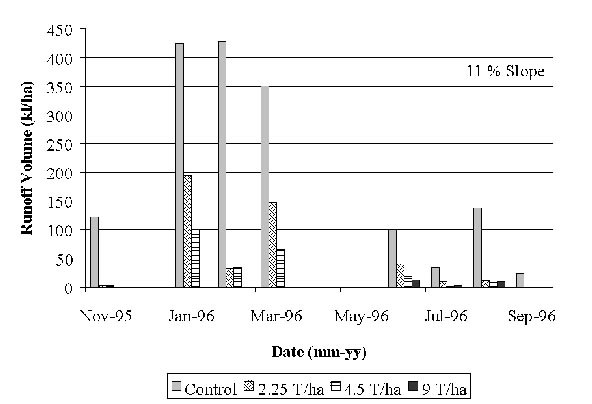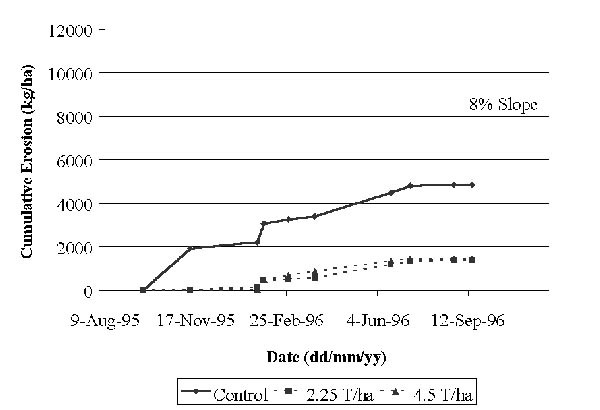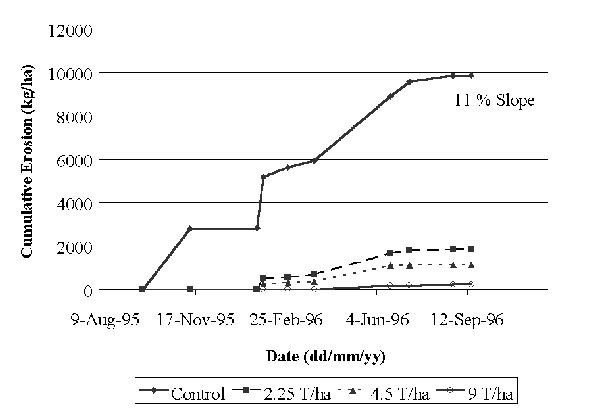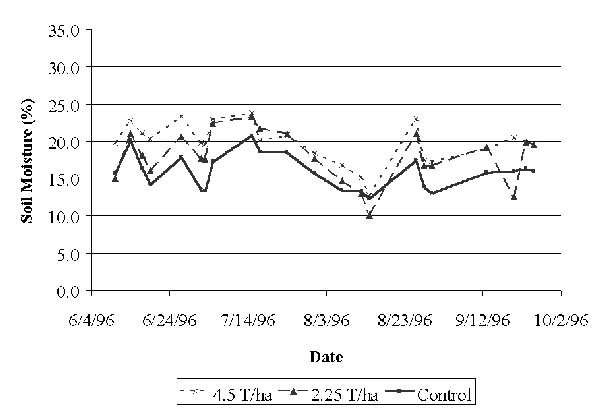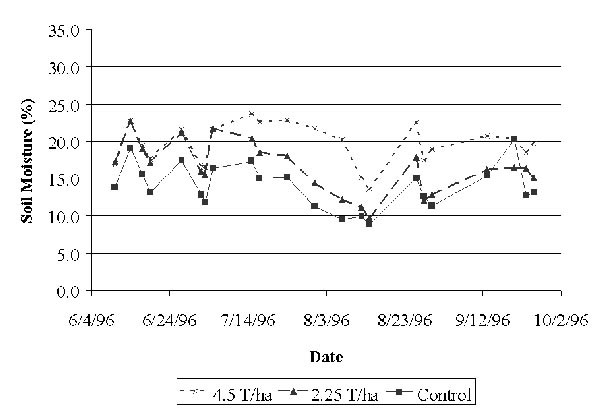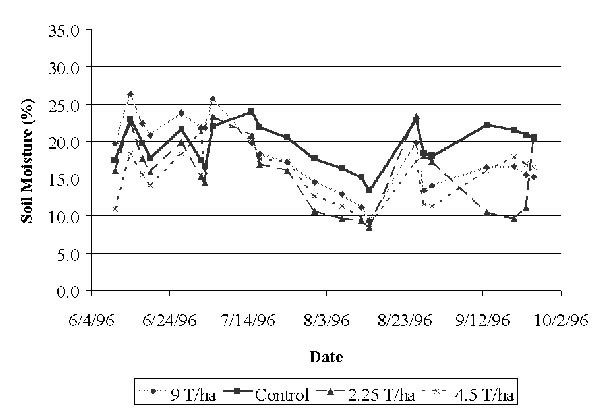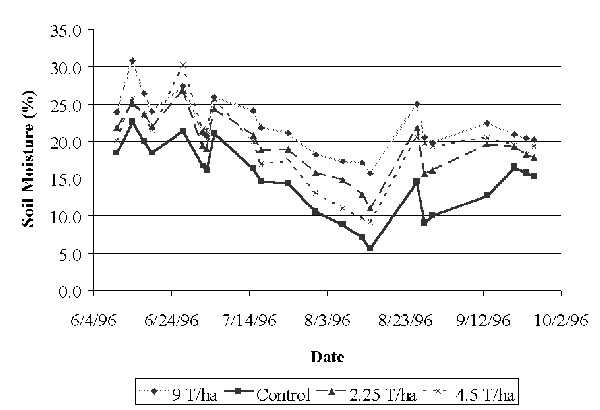Introduction
Soil erosion by water in the potato-growing region of New Brunswick has been identified as one of the most severe soil degradation problems affecting soil quality in Canada. Rates of soil loss vary depending on soil erodibility, rainfall, topography, and how the soil is managed. Soil erosion rates of 24.3 t ha-1 have been reported when potatoes are cropped up and down an 11 % slope, and a reduction in erosion rates to 1.2 t ha-1 when the potatoes are planted along the contour of the slope. Contour planting supports the current conservation planning and use of terraces and grassed waterways in New Brunswick.
The soil that is lost is the most productive layer of soil. Loss of the surface soil results in the incorporation of deeper, less productive soil into the tilled layer. Eroded soil has poorer structure with lower nutrient and moisture holding capacities and is less equipped to support plant growth. Eroded soils are also more difficult to manage and produce lower crop yields of poorer quality. In the short-term, reduced yields on eroded lands can be compensated for by increasing fertilizer applications. This not only translates into higher costs of production, but excessive fertilizer use increases the risk of groundwater contamination and erosion of heavily fertilized soils threatens surface water quality.
Potato producers need management options that will reduce erosion rates and make their business a sustainable one. Cover cropping after potatoes is limited in much of the potato belt as crop establishment is not reliable on those fields harvested after September 15. Only those fields planted to early potato varieties would be suitable. Mulching straw or hay on the potato fields after harvest has successfully reduced erosion rates in P.E.I.
In 1995 a collaborative project between the New Brunswick Department of Agriculture, Fisheries and Aquaculture as well as Agriculture and Agri-Food Canada was established to test the effects of hay mulch on soil erosion in the New Brunswick potato belt. A comparison of runoff and erosion rates was made using 7 Wischmeier-type permanent erosion plots (10m x 30m) located in the Drummond area, 5 km east of Grand Falls. Various rates of mulch application were evaluated at two slope gradients from harvest 1995 until harvest 1996. Application rates at the 11 % slope were 0, 2.25, 4.5 and 9 T ha-1; and 0, 2.25, and 4.5 T ha-1 at the 8 % slope.
Results and Discussion
At the 11 % slope runoff decreased as application rate increased. However, this relationship did not hold at the 8 % slope for the winter runoff events (Fig. 1a,b). The mulch acts as a protective soil cover that reduces raindrop impact and slows overland flow. Slowing overland flow allows more time for water to infiltrate thereby reducing the volume of runoff. The hay mulch applications resulted in a substantial reduction in soil loss. Rates as low as 2.25 T ha-1 reduced cumulative soil loss by 70 to 80 % for the 8 and 11 % slopes, respectively (Fig. 2a,b).
Based on these results, there appeared to be little benefit to applying more than 2.25 tonnes ha-1 to control erosion during 1996 at this site. An application rate of 4.5 tonnes ha-1 of field moist hay is currently recommended in P.E.I. to achieve a residue cover of approximately 65%. Care should be taken before reducing the recommended rate of application, however, as these measurements are based on only one year's data collection. From the fall of 1995 until harvest 1996, the total soil loss from the bare-plot control was only 9.87 T ha-1 at the 11 % slope. It is not unusual to measure erosion rates as high as 38 T ha-1 in this region, and under such conditions application rates greater than 2.25 T ha-1 may be required to maintain soil loss at a sustainable level of 6 T ha-1.
A loss of soil water available for plant uptake is considered one of the foremost contributing factors in the loss of soil productivity caused by erosion. "Available water capacity" is the water retained by soil between field capacity and the permanent wilting point and it is considered available for plant use. Soil moisture management is an important factor in potato crop yield and quality. In general, with the exception of the upper probe position at the 11 % slope, the incorporated hay mulch resulted in higher soil moisture levels over the growing season than the bare-plot control soils (Figs. 3&4) by increasing infiltration and decreasing runoff.
At the 11 % slope the control plot tended to be warmer than the mulched plots from about July 14 until harvest. There were no apparent differences, however, in soil temperature between treatments at the 8 % slope (data not shown). The difference between the two slope gradients is likely due to a change in slope aspect. The 8 % slope faces the south (197E E of N) and receives the sun from the early morning onwards, whereas the 11 % slope faces the south-west (217E E of N) and receives sun later in the day. Soil temperature data was not collected for the very early part of the 1996 growing season but will be considered for future studies.
There were no significant treatment differences in total or marketable yield for the 0, 2.25 and 4.5 T ha-1 treatments at both slopes (Table 2). The 9 T ha-1 treatment, however, resulted in significantly lower yield than all other treatments at the 11 % slope. It cannot be concluded, with certainty, that the yield reduction observed at The 9 T ha-1 treatment was a result of the high rate of mulch application because the plot receiving the 9 T ha-1 treatment was also shaded by an adjacent woodlot which may have contributed to the lower yield. The absence of any treatment effect up to 4.5 T ha-1 supports the use of hay mulch up to this rate with no compromise in yield. Marketable yield was significantly less at the 11 % slope than at 8 % in this study.
Conclusions
The application of hay mulch after potato harvest is an effective soil conservation practice to reduce soil erosion. To establish the most sustainable rate of mulch application, erosion data under a number of climatic conditions over more than one year is necessary. A rate of 2.25 T ha-1 adequately reduced soil loss under relatively mild rainfall conditions on a moderate slope (<9 %). Severe thunderstorms, steep slope gradients and long slopes may require heavier application rates for adequate erosion control. The addition of hay mulch also tends to reduce soil temperature and increase soil moisture although more data is needed to clarify the relationships between the mulch application rate and these soil properties.

